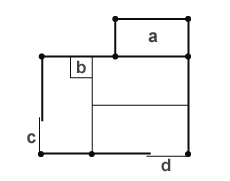|
||
 |
||

(C)2001 Japanese Architecture and Art Net Users System. No reproduction or republication without written permission.
掲載のテキスト・写真・イラストなど、全てのコンテンツの無断複製・転載を禁じます。
|
||||||
| hirasanjou 平三畳 | ||||||
| KEY WORD : architecture / tea houses | ||||||
| Also
hirasanjou-no-seki 平三畳席. A three-mat tea ceremony room *chashitsu 茶室 with the crawl-in
entrance *nijiriguchi
躙口, on the long side of the room floor plan hirairi 平入. In some hirasanjou the alcove is opposite the entrance, but others
are entered beside alcove. The ONKOSHUU 温故集 of 1748 states that "A tea ceremony
room that is entered from the narrow end is called a *fukasanjou
深三畳", and one that is entered from long side is called a hirasanjou. The
CHADOU MOCHIZUKISHUU 茶道望月集 (1724) states that the tea ceremony
room at Myoukian 妙喜庵, in Kyoto, is of the hirasanjou type. During the Momoyama
period, three-mat or 3 1/2-mat tea ceremony rooms of both styles were
very popular. According to an entry in the SOUTAN NIKKI 宗湛日記 (dated December
5, 1586), Kamiya Soutan 神谷宗湛 (1551-1635) and Souden 宗伝 held a night-time tea ceremony
at Jakuan じゃく庵, in a hirasanjou tea ceremony room that had a firebox. The
firebox in hirasanjou, is either placed on the far side of the entrance
or on the near side. However, the firebox was usually placed on the near side
of the tea ceremony room because it allowed more space for the tea masters to
display their valuable utensils. The term hirasanjou is now obsolete. Example:
Shukouan 珠光庵 at Shoumyouji 称名寺, Nara. |
||||||
 |
||||||
| REFERENCES: | ||||||
| EXTERNAL LINKS: | ||||||
| NOTES: | ||||||
(C)2001 Japanese Architecture and Art Net Users System. No reproduction or republication without written permission. 掲載のテキスト・写真・イラストなど、全てのコンテンツの無断複製・転載を禁じます。 |
||||||